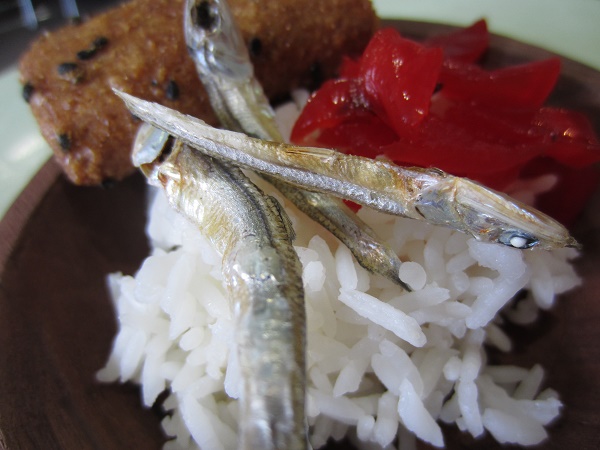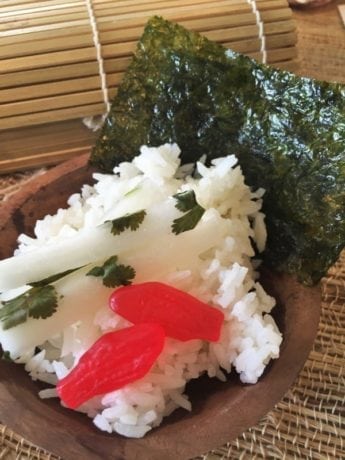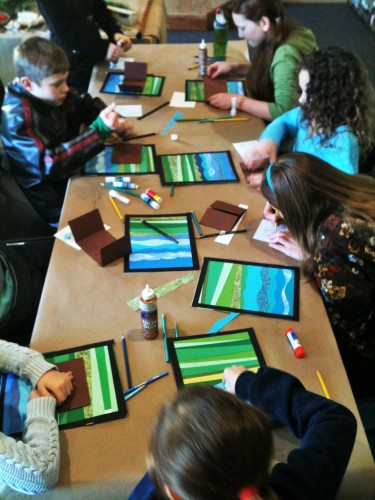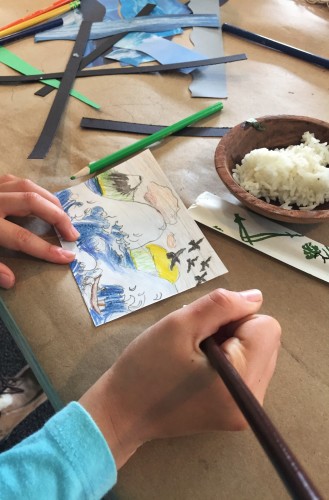Kino lived on a farm. [...] Kino’s father sold his vegetables and rice and bought his fish.
Daikon, turnips, leek, spinach, okra, sweet potato, taro root, eggplant, horseradish root, lemongrass, forest mushrooms, ginger root, and bok choy.
Then she packed his lunch [of] cold rice and fish and a bit of radish pickle.
Pickled radish and a bag of dried anchovies from a Japanese market.
Then she packed his lunch in a clean little wooden box . . .
A traditional bento (lunch) box.
. . . and he and Jiya searched for pebbles blue and emerald red and gold.
Polished pebbles from an imports store.
In the summer Kino worked on the farm helping his father. Even his little sister Setsu and the mother helped when the rice seedlings had to be planted and when the grain was ripe and had to be threshed.
Wheat grass is a look-alike found in health food stores and some mainstream markets.
However early he got up his mother always got up too and gave him a bowl of hot rice soup and some bean curd and hot tea before he started.
Iron tea set and a Japanese ceramic bowl from an imports store and loose green tea.
Rice paper filled with Chinese writing - someone's homework we found blowing in the woods one day! (Japanese characters are derived from the Chinese.)
Shells represent the setting and the bounty of the ocean that the villagers depend upon.









%20banner%20copy.jpg)


